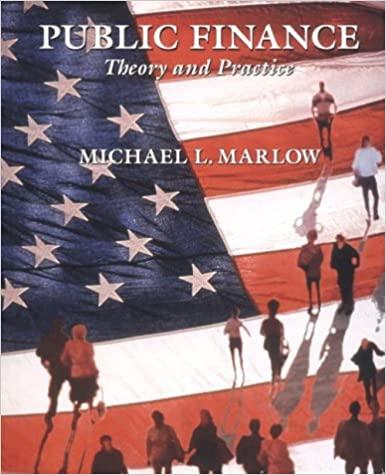Answered step by step
Verified Expert Solution
Question
1 Approved Answer
Chris, an analyst comes up with two triaging models to classify 911 calls to be dispatched a B-HEARD team, using two machine learning models: Deep
- Chris, an analyst comes up with two triaging models to classify 911 calls to be dispatched a B-HEARD team, using two machine learning models: Deep Neural Networks and Decision Trees. To do this, using some characteristics of the call (a vector of data containing the location and time of the incident, as well as specific circumstances of the call and other factors) he trains a classification model where means not sending a B-HEARD team to a call with characteristics , while means a B-HEARD should be sent to a call with characteristics . He trained these binary classification models using historical data denoting whether a past call was eligible for B-HEARD or it wasnt eligible In other words, an usual binary classification model using past data sampled i.i.d. from He comes up with the following out of sample results table for his models (using the same testing dataset for both models):
| Machine Learning Model | Sensitivity | Specificity | Accuracy | AUC |
| P((X)=1|Y=1) | P((X)=0|Y=0) | P((X)=Y) |
| |
| Deep Neural Networks | 0.64 | 0.71 | 0.70 | 0.72 |
| Decision Trees | 0.03 | 0.99 | 0.97 | 0.51 |
Another analyst, John, looks at the results and says that they look funky even though he doesnt know exactly why. They come to you to ask for a second opinion. According to you who is right and why? (Hint: How unbalanced is the dataset?)
- After confirming (or revising) the results according to your input. You are tasked with explaining (in writing) in plain English to the B-HEARD stakeholders (who are knowledgeable in B-HEARD operations and logistics, but not experts in statistics or data science) which model you recommend and why. Please mention how the sensitivity and specificity of the model (or their complimentary rates, the false positive and negative rates) affect the actual implementation of triaging model in the real world. Are these errors the same? Which errors are preferable and how would you quantitatively balance them in training the model or modifying the classification models? Again, explain these in plain words as if explaining to a non-technical stakeholder knowledgeable in B-HEARD (the context of the answers shouldnt be general but within the context of the B-HEARD program, that is, think of the outcomes of implementing these models in the real world).
Step by Step Solution
There are 3 Steps involved in it
Step: 1

Get Instant Access to Expert-Tailored Solutions
See step-by-step solutions with expert insights and AI powered tools for academic success
Step: 2

Step: 3

Ace Your Homework with AI
Get the answers you need in no time with our AI-driven, step-by-step assistance
Get Started


